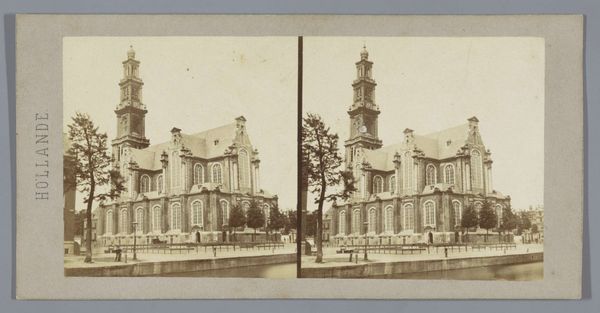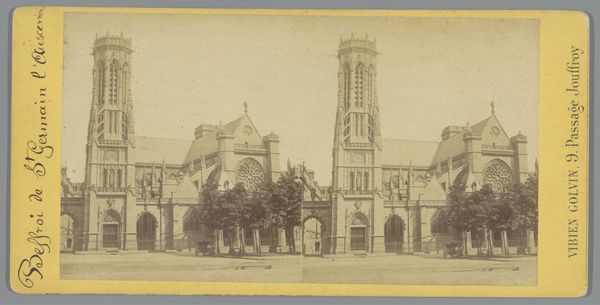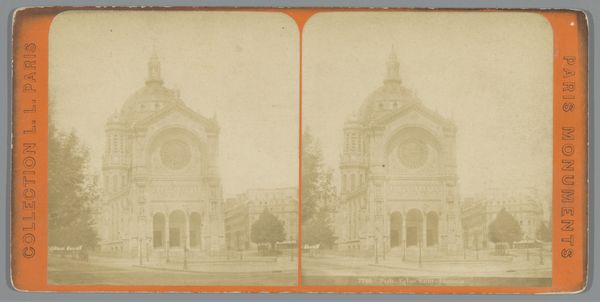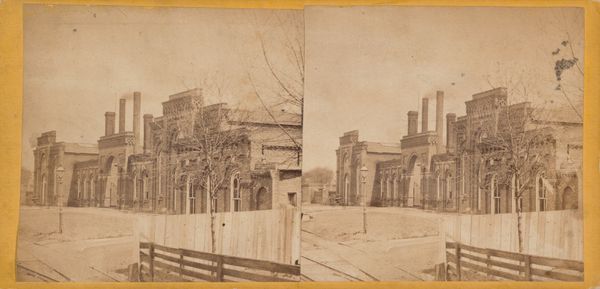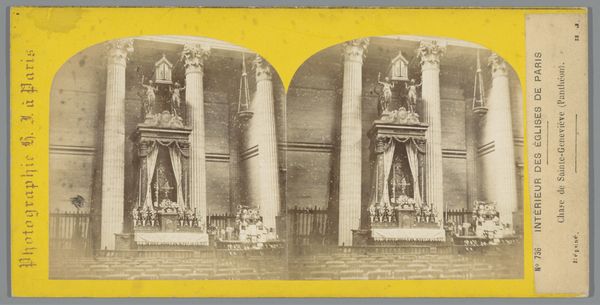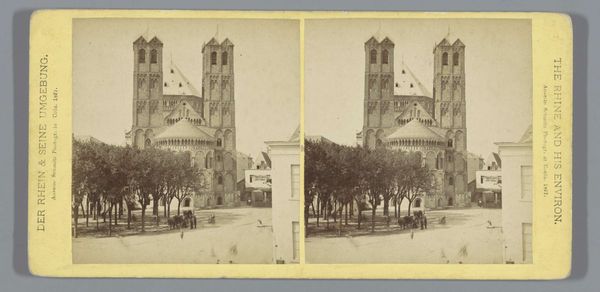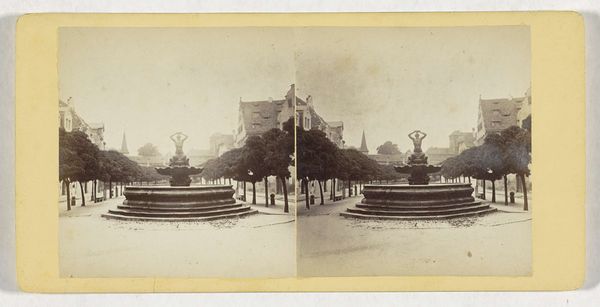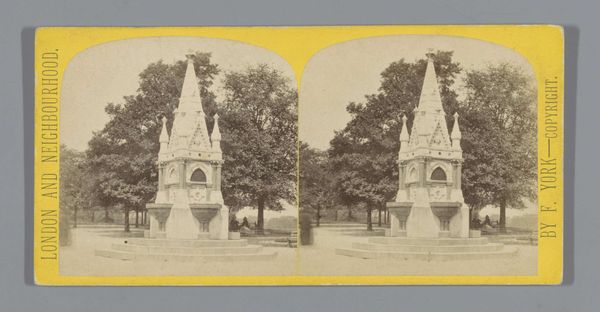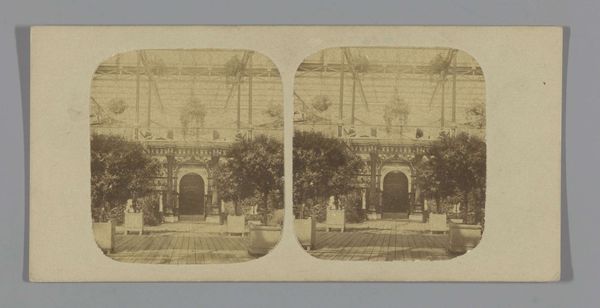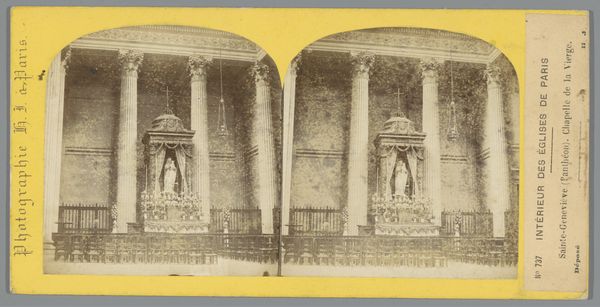
Gezicht op de Onze-Lieve-Vrouwekathedraal en het standbeeld van Peter Paul Rubens aan de Groenplaats in Antwerpen 1861 - 1870
0:00
0:00
print, photography
# print
#
landscape
#
photography
#
cityscape
Dimensions: height 85 mm, width 174 mm
Copyright: Rijks Museum: Open Domain
Curator: This photograph, dating from sometime between 1861 and 1870, presents a view of the Groenplaats in Antwerp, dominated by the Cathedral of Our Lady and the statue of Peter Paul Rubens. It's captured in print form, a typical way to record urban scenes in that era. Editor: The image is so well-structured. The cathedral spire dramatically contrasts with the horizontal lines of the canopy structure surrounding the statue. And that sepia tone just perfectly evokes a sense of faded grandeur. Curator: Indeed, this work is quite compelling. It places Rubens, a major figure in Antwerp's cultural identity, within a context that emphasizes civic pride and historical consciousness. Notice how the statue is positioned, elevated, and almost theatrically framed, as if perpetually performing for the city. Editor: It’s all about visual relationships, isn’t it? The soft blur of the foliage against the sharply defined architectural elements—it gives the composition a push and pull, keeping your eye engaged. I also like how the photographer managed to capture the light hitting the surfaces—especially that rooftop! Curator: Absolutely. It speaks to a burgeoning sense of urban identity, where public art and architecture played key roles. Images like this were widely distributed, helping to shape perceptions and foster a shared civic identity. Editor: It's curious that the square is devoid of people; the photographer must have chosen to create such contrast or simply waited for a pause of passers-by. Nevertheless, this choice makes it a place of ideal perfection, almost abstract in its composure and detail. It's pretty striking how those geometric shadows cut the grass and how those stark white fences frame the statue. Curator: And that emptiness allows the viewer to focus intently on the visual statements about history and art that the photograph tries to capture and convey. It really captures the monumental aspects of the place! Editor: I have to say, even if history were not my prime concern, it's still just beautifully designed. Curator: It truly captures the city's relationship to both its artistic past and the social dynamics of the period. Editor: Well, whatever the underlying political currents, I still enjoy the pure design elements!
Comments
No comments
Be the first to comment and join the conversation on the ultimate creative platform.

